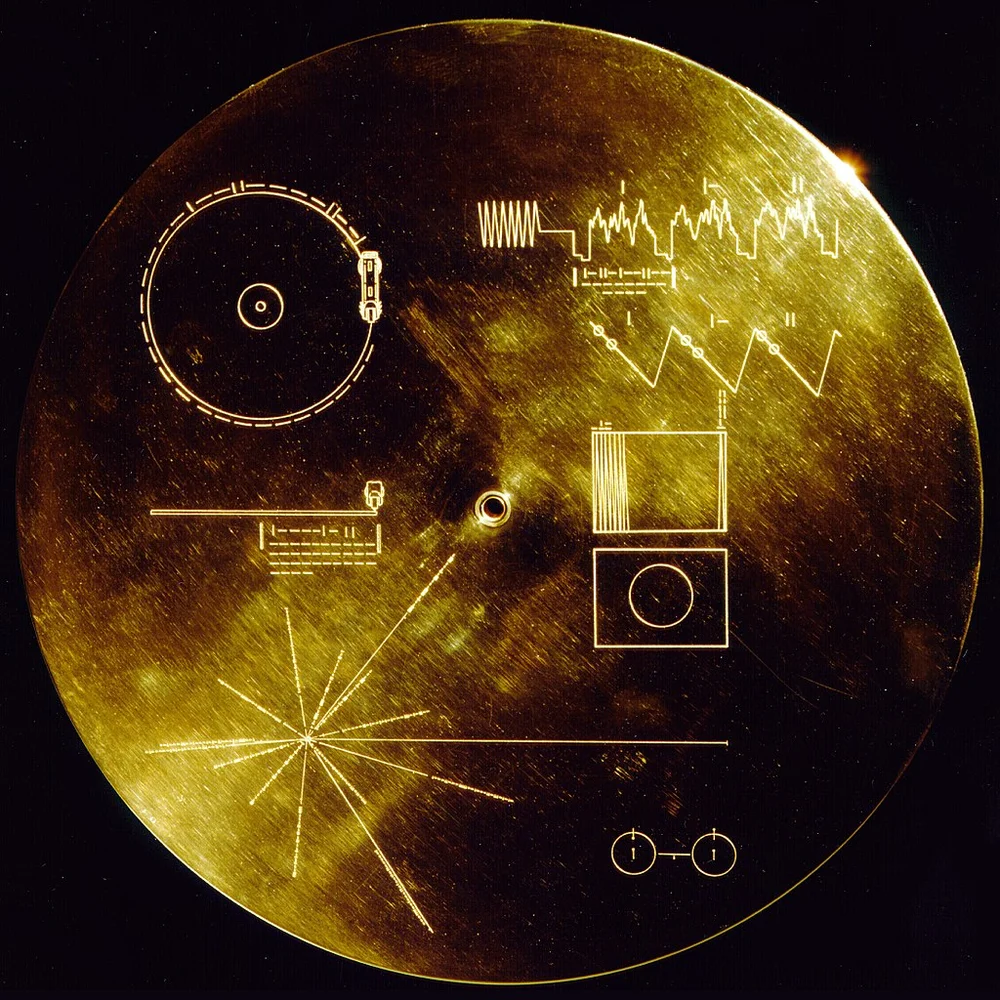Imagine a record player hurtling through the vast emptiness of space, carrying a message from humanity. That’s the essence of the Voyager Golden Record, a 12-inch gold-plated copper disc launched in 1977 aboard the twin Voyager spacecraft, Voyager 1 and 2. It’s a message not for a specific recipient, but for any intelligent life form that might encounter them in the cosmic ocean. It’s a testament to our curiosity, a hopeful handshake across the unimaginable gulf of space.
A World Captured in Sound and Image
The Golden Record is a carefully curated time capsule, packed with sights and sounds designed to tell the story of Earth, even to an alien intelligence with completely different technology and language. It opens with a welcoming symphony of greetings in 55 Earth languages, a chorus that spans millennia. From the ancient Akkadian spoken over 6,000 years ago to a warm Bengali salutation, it’s a way to introduce ourselves, a first contact across the unimaginable vastness of space.
But greetings alone can’t tell the whole story. The record goes beyond words, immersing the listener (or should we say listener-being?) in the dynamic sounds of our world. Imagine the crackle of lightning, the howl of wind whipping across a desert, the rhythmic crash of waves against a shore – these natural sounds paint a vivid picture of the forces that shape our planet. The symphony continues with the diverse calls of animals, from the trumpeting of elephants to the melodic song of birds. Even the quintessential human sound – laughter – finds its place on the record, a testament to our joy and spirit.
Music, a universal language that transcends spoken words, plays a crucial role. A meticulously chosen 90-minute montage features a wide range of musical styles from across the globe. Imagine the majestic symphonies of Western classical music juxtaposed with the captivating rhythms of Indian melodies. The record showcases the breadth of human musical expression, a way to share our emotions, our creativity, and the stories woven into the very fabric of our music.
The Golden Record doesn’t just tell us what Earth sounds like; it also shows us what it looks like. A collection of 116 images etched onto the record’s surface provides a visual tour of our planet. We see the breathtaking beauty of landscapes – from the icy peaks of mountains to the vast expanse of deserts. We encounter the incredible diversity of life on Earth, from majestic whales breaching the ocean surface to the delicate beauty of flowers in bloom. Even the human form finds its place on the record, along with family photos, a glimpse into the social fabric of our species.
A Clever Message for Unknown Ears
The creators of the Golden Record, a committee led by the renowned astronomer Carl Sagan, faced a daunting challenge: how to ensure the message could be played and understood by an alien species with entirely different technology and language. After all, advanced storage devices like flash drives were still science fiction in 1977.
The ingenious solution lay in the universality of science and mathematics. The record cover itself serves as a user manual, etched with instructions on how to decode the information. These instructions rely on basic principles of physics and mathematics, concepts assumed to be universal across the cosmos. By understanding the behavior of hydrogen atoms and the concept of hyperfine transition, an alien intelligence could decipher the record’s content.
The record itself encodes information in a clever way. The greetings and sounds are etched as audio waves, but the record goes beyond simply replicating waveforms. The instructions provide a formula for translating these waveforms into actual sound. Similarly, the images are encoded using a numerical system that can be decoded using basic mathematical operations. It’s a complex message, but with a foundation in universal concepts.
A Long and Lonely Journey
Launched in 1977, Voyager 1 and 2 embarked on their epic journeys. They explored the outer reaches of our solar system, providing us with groundbreaking information about Jupiter, Saturn, Uranus, and Neptune. As they ventured further, they became the first human-made objects to enter interstellar space.
Communication with Voyager 1 ceased in 2000, and with Voyager 2 in 2005. Yet, they continue their solitary journeys, carrying the Golden Record, a beacon of humanity’s hopes and dreams, a testament to our curiosity and our desire to connect with the unknown.
A Legacy of Hope
The Voyager Golden Record is more than just a collection of sounds and images. It’s a hopeful message in a bottle cast out into the vast cosmic ocean. It’s a symbol of our desire to connect, to share our story with the universe, and to find a place amongst the stars. It’s a reminder that even in the vast emptiness of space, we’re not alone. We are curious, we are creative



